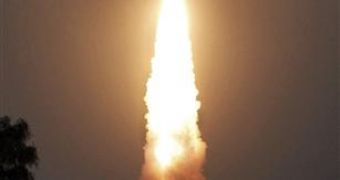The very name of the first lunar vehicle built by the Indians, Chandrayaan-1, says a lot about their hopes and efforts for the future. This is a statement that the probe is just the first in a series of similar bold attempts, which will place India among the largely-developed super-powers of the world who have their own space ambitions, as a representative of the less developed nations. But the real situation is much trickier than it seems.
Actually, the Moon probe event has not been drawing the attention of the media since last month, when the hostilities in Mumbai begun. "I wonder if it has already faded from everyone's memory," broods astronomer Subramaniam Ananthakrishnan, the former director of the National Center for Radio Astrophysics in Pune, India. This is even more dramatic if we think that, besides the direct technological and scientific importance of the probe, it was also supposed to spark, maintain and increase people's interest in science and technology.
It was supposed to show that India could accomplish such a major feat on its own, and that it's a place where science and technology have a chance. Starting with the first Indian prime minister, Jawaharlal Nehru, a lot of attention has been given to these fields, "It is science alone that can solve the problems of hunger and poverty," he stated at the time, as cited by New Scientist. He even devised institutions that would be an answer to the US-based MIT and Caltech – the Indian Institutes of Technology (IITs). Nevertheless, the highly-skilled people trained there – or in the five Indian Institutes of Science Education and Research (IISERs) – still leave the country afterwards.
These institutions have "produced many of the finest minds in America's Silicon Valley and Fortune 1000 corporations," as Shashi Tharoor, former UN under secretary general, once wrote. And this is not a problem only for India, but for most nations that don't have the economic sustainability of the developed countries. Let's face it, most of the names of the "US" researchers don't sound American at all, and not because their ancestors came to America a long time ago.
This is not to say, though, that it's a bad thing that they move to the States or to other such countries, where they can develop their scientific careers and goals with increased funding and easier access to the latest technology. But then again, where does that leave their native countries? Wouldn't this further increase the gap between the developed states and the less developed ones? Until a valid answer is provided, Chandrayaan-1's true aim should not be forgotten.
As Sanjay Sane, from the National Center for Biological Sciences in Bangalore (who came back with a PhD from the University of California, Berkeley) claims, "It can't be just about going to the moon and coming back. Ultimately, it has to be about using it for some larger purpose".

 14 DAY TRIAL //
14 DAY TRIAL //